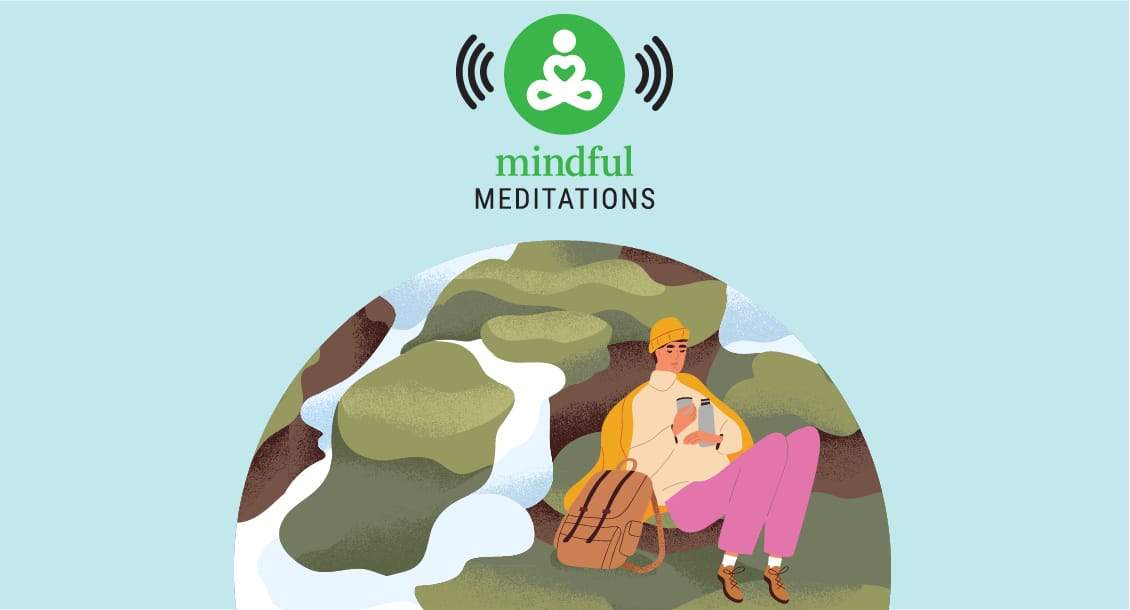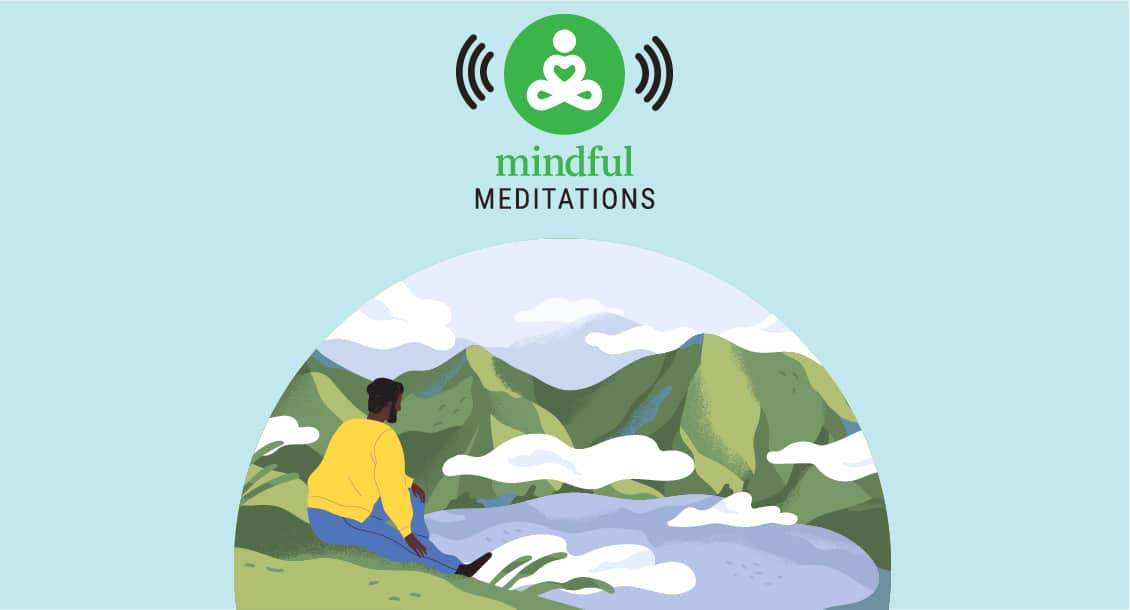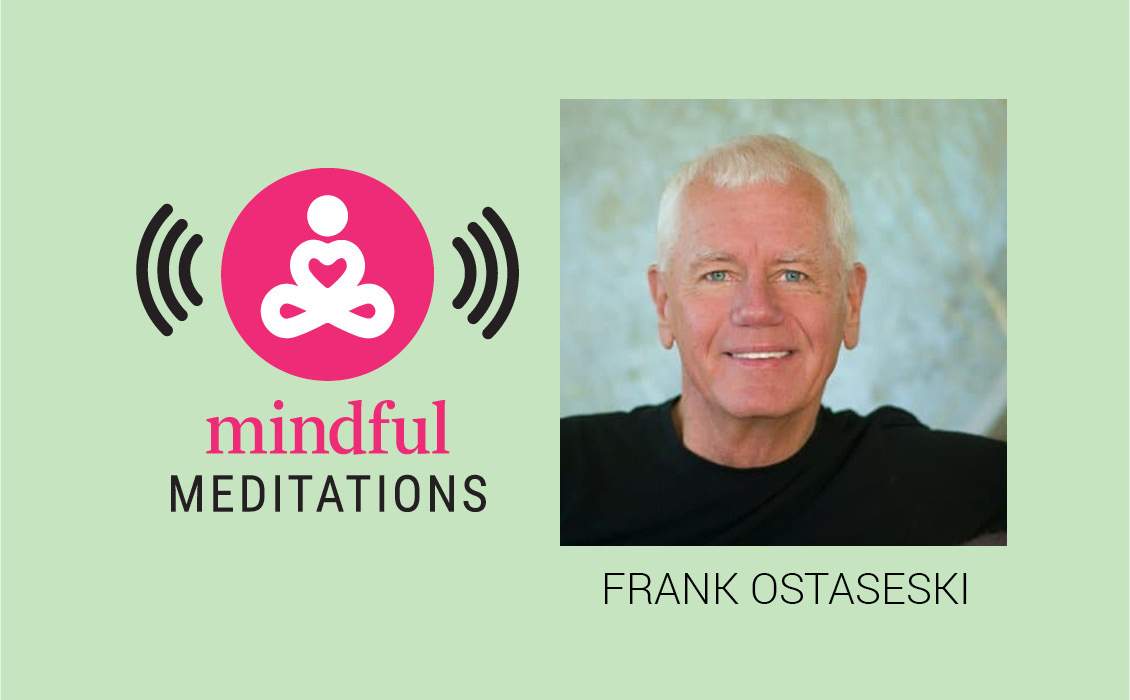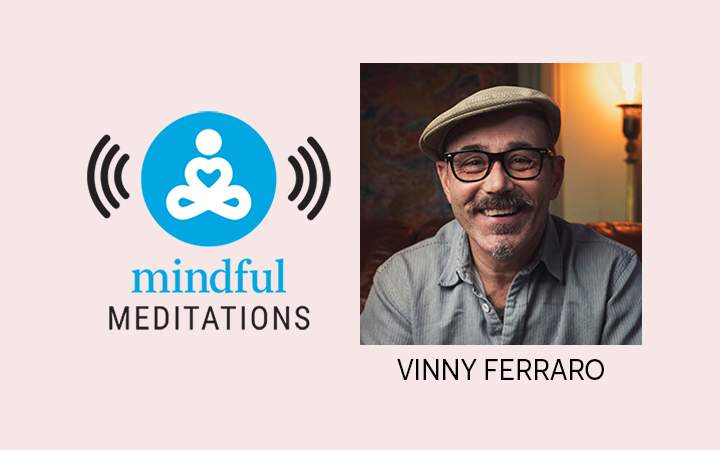We’re going to be exploring today a series of different ways to cultivate mindful attention. It’s a particularly helpful practice when the mind is busy, when we’re finding it hard to be present, when we’re triggered by something, or when it’s just really hard to settle. Of course, this might sound like any day of the week. But there are times in particular when we’re so busy thinking, planning, worrying, stressing that it’s really hard to focus on the breath or the body, or whatever particular meditation object we’re using.
Attending to Attention
This practice is a really useful technique or tool that supports the attention that is grounded in our physical sensory experience. So I’m going to instruct you to move your attention from being aware of seeing, to hearing, to sensing your body.
And when I say, “be mindful of seeing,” that means I’m going to invite you to lower your gaze, like I’m doing right now, and sit with a soft, focused attention: relaxed eyes, soft gaze, and just being aware of the visual stimuli—color, light, form, shape. You’re not looking at any particular thing or observing or studying anything closely, just being aware of receiving the visual field in the same way we listen—which will be the next thing we shift our attention to. We will go from seeing to hearing.
And with hearing, again, you’re just opening up your attention and allowing the full auditory landscape to be known—hearing the ambient sounds, the distant sounds, the nearer sounds, the sound of my voice. This also includes sounds in the room where you are, or the sounds of nature, mechanical sounds—the general panorama of sounds.
So, we’ll do that for a few moments, and then we’ll shift our attention to sensing our physical experience. That is, sensing our posture, and in particular, feeling the contact of the body with the ground or whatever you’re sitting on. The focus will be on feeling your sitz bones, your legs, your feet. We’ll also steer toward some awareness of our breath. Then, we’ll rotate through those three primary experiences: seeing, hearing and sensing. And we’ll do this rotation several times as a way to really ground the attention.
Another benefit: each time we move the attention in this manner, it lights up our curiosity. And when we’re curious, it allows our attention to engage, allows us to abide more strongly in the present.
A Grounding Practice to Focus Your Busy Mind
Watch the video:
Listen to the Audio:
A Grounding Practice to Focus Your Busy Mind
Follow the Practice:
- Begin by finding a comfortable posture where you can sit upright and relaxed. Just take a moment to sense your physical experience. Ideally, your eyes are closed, or, if not, the gaze is lowered a little. Sense your body settling. Feel the contact of your body with the ground or the chair. Be aware of your posture, aware of the movement of breath and the sensations. In the body.
- Now, from this experience of sensing the body, I invite you to open your eyes and just gaze in front of you. Lower the gaze maybe a few feet—aim for relaxed, soft eyes, a soft gaze. And just be mindful that you’re seeing, receiving through the eyes color, light, form, shape, movement.
- Now, closing your eyes, lowering your gaze more, and shifting your attention to hearing. Be aware of sound. Be aware of silence. Be aware of the whole variety of the soundscape.
- And then shifting awareness to sensing your body again. Sensing your posture, contact, touching, breathing. And open the eyes: now we’re seeing. Aim for a soft gaze. Think of saving through the eyes. There’s no need to make any particular effort. This is just simple mindfulness of seeing.
- Closing the eyes now and be aware of hearing. No need to think about the sounds or the source of the sounds, just resting in the simple experience of hearing, of listening.
- And now shifting attention to sensing the body again. Be curious about whatever it is you notice: temperature, breath, the experience of contact and touching, other physical sensations.
- And moving to awareness of seeing again, so, opening the eyes. Move the eyes down a little, have a soft gaze. Be aware of the experience of knowing that you’re sitting here: sitting, seeing, hearing. There may be all kinds of noise going on in your mind—thoughts, planning, worrying—and yet this attunement to seeing and hearing and sensing allows you to stay grounded here.
- Now we’re going to move our attention a little more quickly among these three spheres of our experience. So, let’s close the eyes, shifting awareness to hearing and sensing the sensations of your body. And now to seeing: opening the eyes. Now, again to hearing. Sensing your body. And lastly, opening the eyes and seeing.
- As we bring the meditation to a close, be aware of all three of these areas of experience: seeing, and hearing, and sensing. Notice how this practice allows you to stay grounded and present.
No matter what might be going on in your life, whether it’s a busy mind, challenges in your body, or whatever else is pulling you away from the present moment, we can use this simple practice. Seeing, hearing, sensing: it’s a way to stay grounded, present, open. And it’s a way to support yourself in staying really grounded in your immediate experience.
You can practice this anywhere: in your office, at home, in a park. Pay particular attention to the contrast between doing this practice indoors versus having the support of the sensory experience outside. See if that makes a difference. And remember you can draw on this practice at any time—particularly when it feels hard to get present or concentrate or focus.
explore session #4
Opening Our Hearts to the Natural World
Both loving-kindness practice and being in nature are ways for us to abide more naturally in a sense of open-hearted connection.
Read More
more mindful meditations
Fearless Open-Hearted Awareness with Frank Ostaseski
In this four-part series, you’ll explore your relationship to endings without any judgment or criticality.
Read More
Nourish Compassion with Vinny Ferraro
In this four-part series, you’ll discover the power of compassion and explore how it can help you connect more deeply with both yourself and others.
Read More






